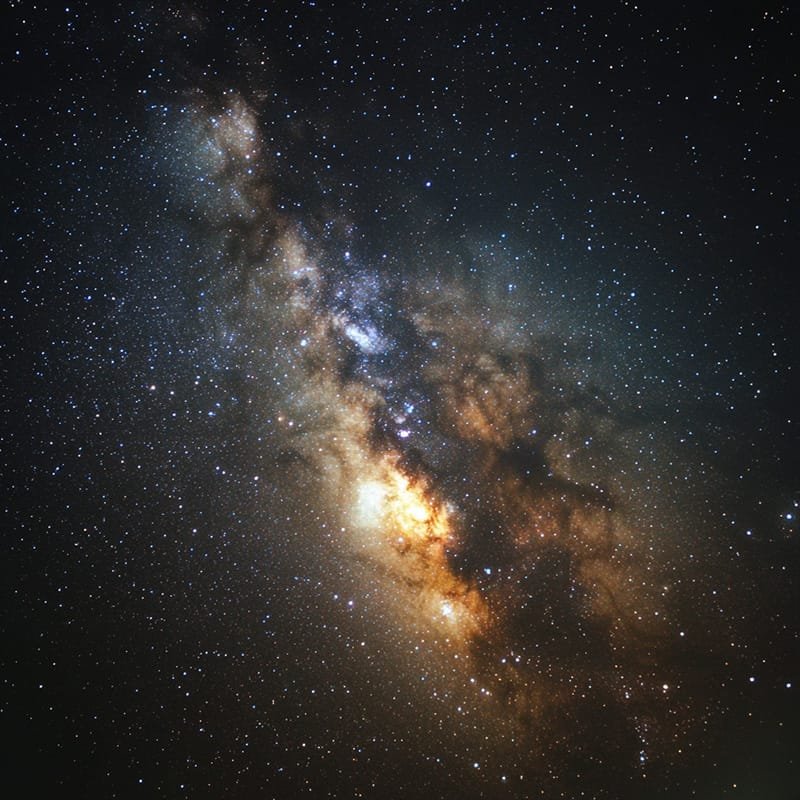The concept of parallel worlds has fascinated humans for centuries. It is the idea that there are multiple universes, each with its own set of physical laws and conditions, existing alongside our own. These parallel worlds may be similar to ours, with only slight variations, or they may be completely different, with entirely different laws of physics and even different forms of life.
The idea of parallel worlds has been explored in various forms of literature and art, from ancient myths and legends to modern science fiction. It is a concept that sparks the imagination and raises profound questions about the nature of reality and our place in the universe.
Key Takeaways
- Theoretical physics suggests the existence of parallel worlds.
- The multiverse theory proposes that there are infinite parallel universes.
- Quantum mechanics supports the idea of parallel universes.
- Parallel worlds are a common theme in science fiction.
- Consciousness may play a role in creating parallel realities.
Theoretical physics and the concept of parallel worlds
The concept of parallel worlds is not just a product of human imagination; it is also a topic of serious scientific inquiry. Theoretical physics, in particular, has delved into the possibility of parallel universes as a way to explain some of the mysteries of the universe.
One theory that supports the existence of parallel worlds is the multiverse theory. According to this theory, our universe is just one of an infinite number of universes that exist in a vast “multiverse.” Each universe in the multiverse has its own set of physical laws and conditions, and they may even have different dimensions or levels of existence.
The multiverse theory is based on the idea that our universe is just one possible outcome of a cosmic event known as the Big Bang. In this view, every possible outcome of the Big Bang actually happened in different universes within the multiverse. This means that there are universes where life never evolved, universes where dinosaurs still roam the Earth, and even universes where humans have developed advanced technology far beyond our own.
The multiverse theory and its implications
The multiverse theory has profound implications for our understanding of the universe and our place in it. If there are indeed parallel universes, it means that our universe is just one small part of a much larger cosmic tapestry. It also means that there may be other forms of life in the multiverse, some of which may be far more advanced than us.
The multiverse theory also raises questions about the nature of reality itself. If there are multiple universes with different physical laws and conditions, then what is the true nature of reality? Is it simply a matter of perspective, with each universe having its own version of reality? Or is there a deeper underlying reality that transcends all universes?
These questions have profound philosophical implications and challenge our traditional notions of reality. They also raise the possibility that our universe is just one of many possible realities, and that there may be other versions of ourselves living in parallel worlds.
Quantum mechanics and the existence of parallel universes
One branch of physics that supports the idea of parallel worlds is quantum mechanics. Quantum mechanics is the branch of physics that deals with the behavior of particles at the smallest scales, such as atoms and subatomic particles.
According to quantum mechanics, particles can exist in multiple states at the same time, a phenomenon known as superposition. This means that a particle can be in two places at once or have two different properties simultaneously. This idea is often illustrated by the famous thought experiment known as Schrödinger’s cat, where a cat is both alive and dead until it is observed.
The concept of superposition suggests that there are multiple possible outcomes for any given event, and each outcome exists in a separate parallel universe. This idea is known as the many-worlds interpretation of quantum mechanics. According to this interpretation, every time a quantum event occurs, such as the decay of an atom or the measurement of a particle’s position, the universe splits into multiple parallel universes, each corresponding to a different outcome.
The possibility of parallel worlds in science fiction
The concept of parallel worlds has long been a staple of science fiction. From H.G. Wells’ “The Time Machine” to Philip K. Dick’s “The Man in the High Castle,” science fiction authors have explored the idea of alternate realities and parallel universes.
In science fiction, parallel worlds are often depicted as alternate versions of our own world, where history has taken a different course or where different laws of physics apply. These parallel worlds provide a rich source of storytelling possibilities, allowing authors to explore themes such as identity, fate, and the nature of reality.
Science fiction has also popularized the idea of traveling between parallel worlds, either through advanced technology or through supernatural means. This idea of interdimensional travel has captured the imagination of readers and viewers, inspiring countless stories and films.
The role of consciousness in creating parallel realities

One intriguing idea that has been proposed is that consciousness plays a role in creating parallel realities. According to this view, our thoughts and intentions have the power to shape the world around us, including the creation of parallel universes.
This idea is based on the concept of quantum consciousness, which suggests that consciousness is not just a byproduct of brain activity but is an inherent property of the universe itself. According to this view, consciousness is a fundamental aspect of reality, and it has the ability to influence the behavior of quantum particles.
If consciousness can influence quantum events, then it follows that our thoughts and intentions can create different outcomes in different parallel universes. This idea has been explored in various spiritual and metaphysical traditions, as well as in some branches of theoretical physics.
The idea of alternate timelines and parallel universes in popular culture
The concept of alternate timelines and parallel universes has become a popular trope in popular culture. From movies like “Back to the Future” to TV shows like “Stranger Things,” the idea of multiple timelines and parallel worlds has captured the imagination of audiences around the world.
In these stories, characters often find themselves in alternate versions of their own world, where history has taken a different course or where different versions of themselves exist. These alternate timelines provide a rich source of storytelling possibilities, allowing writers to explore themes such as fate, identity, and the consequences of our actions.
The idea of parallel universes has also been explored in video games, where players can travel between different dimensions or interact with alternate versions of themselves. This interactive medium allows players to experience firsthand the thrill and wonder of exploring parallel worlds.
The scientific evidence for parallel universes
While the concept of parallel universes is still largely speculative, there is some scientific evidence that supports their existence. One piece of evidence comes from the study of cosmic microwave background radiation, which is the faint afterglow of the Big Bang.
Scientists have found anomalies in the cosmic microwave background radiation that cannot be explained by our current understanding of the universe. These anomalies could be evidence of other universes colliding with our own or leaving imprints on the fabric of spacetime.
Another piece of evidence comes from the study of black holes. According to some theories, black holes may be portals to other universes, allowing matter and energy to pass between them. While this idea is still highly speculative, it raises the possibility that black holes could be windows into parallel worlds.
The philosophical implications of parallel worlds
The concept of parallel worlds raises profound philosophical questions about the nature of reality and our place in the universe. If there are indeed multiple universes with different physical laws and conditions, then what is the true nature of reality? Is it simply a matter of perspective, with each universe having its own version of reality? Or is there a deeper underlying reality that transcends all universes?
These questions challenge our traditional notions of reality and raise the possibility that our universe is just one of many possible realities. They also raise questions about free will and determinism, as well as the nature of consciousness and the role it plays in shaping our experience of reality.
The potential for parallel worlds to exist beyond our understanding
While the concept of parallel worlds is intriguing, it is important to recognize that our understanding of the universe is still limited. There may be aspects of reality that are beyond our current comprehension, including the existence of parallel universes.
It is also possible that our current theories and models of the universe are incomplete or flawed, and that there are other explanations for the phenomena that have been attributed to parallel worlds. As scientists continue to explore the mysteries of the universe, it is likely that our understanding of parallel worlds will evolve and deepen.
The search for evidence of parallel universes through experimentation and observation
Scientists are actively searching for evidence of parallel universes through experimentation and observation. One approach is to study the cosmic microwave background radiation in more detail, looking for anomalies that could be evidence of other universes.
Another approach is to study the behavior of particles at the smallest scales using particle accelerators and other experimental techniques. By studying the behavior of particles, scientists hope to gain insights into the nature of reality and the possibility of parallel worlds.
In addition to experimental approaches, scientists are also using mathematical models and computer simulations to explore the possibility of parallel universes. These models allow scientists to test different scenarios and see if they can reproduce the observed phenomena in our universe.
Conclusion and the importance of exploring the concept of parallel worlds
The concept of parallel worlds is a fascinating and thought-provoking idea that has captured the imagination of humans for centuries. It raises profound questions about the nature of reality, our place in the universe, and the role of consciousness in shaping our experience.
While the existence of parallel universes is still largely speculative, there is some scientific evidence that supports their existence. Scientists are actively searching for evidence of parallel universes through experimentation and observation, and our understanding of the universe is likely to evolve and deepen in the coming years.
Exploring the concept of parallel worlds is not just a scientific endeavor; it is also a philosophical and artistic exploration of the human imagination. It challenges our traditional notions of reality and raises profound questions about the nature of existence.
By delving into the concept of parallel worlds, we can gain a deeper understanding of ourselves and our place in the universe. It is a journey of exploration and discovery that has the potential to expand our horizons and open up new possibilities for the future.
If you’re fascinated by the concept of parallel worlds and are eager to delve deeper into this mind-bending topic, you won’t want to miss out on an intriguing article titled “Exploring the Multiverse: Unraveling the Mystery of Parallel Worlds.” This thought-provoking piece, available on The Universe Episodes blog, offers a captivating exploration of why parallel worlds exist and the potential implications they hold for our understanding of reality. Discover more about this captivating subject by clicking here.
FAQs
What are parallel worlds?
Parallel worlds, also known as parallel universes or alternate realities, are hypothetical universes that exist alongside our own. These universes may have different physical laws, histories, and outcomes.
Why do parallel worlds exist?
The existence of parallel worlds is a topic of debate among physicists and philosophers. Some theories suggest that parallel worlds may exist due to the nature of quantum mechanics, while others propose the existence of a multiverse where every possible outcome of a situation exists in a separate universe.
How can we detect parallel worlds?
Currently, there is no way to directly detect parallel worlds. However, some scientists believe that evidence of their existence may be found through the study of cosmic microwave background radiation or through the behavior of subatomic particles.
What are the implications of parallel worlds?
The existence of parallel worlds has significant implications for our understanding of the universe and our place in it. It suggests that there may be infinite versions of ourselves and that every decision we make creates a new universe with a different outcome.
Are parallel worlds just science fiction?
While the concept of parallel worlds has been popularized in science fiction, it is also a topic of serious scientific inquiry. Many respected physicists and philosophers have proposed theories about the existence of parallel worlds and are actively researching the topic.
–
Summary
In this article, I delve into the fascinating concept of parallel worlds, exploring the idea that there may be multiple universes existing alongside our own. I discuss how this concept has captured the human imagination for centuries, and how it has been explored in various forms of literature and art.
My Thoughts
I find the concept of parallel worlds to be a captivating and thought-provoking topic. It challenges our traditional notions of reality and raises profound questions about the nature of the universe and our place in it. While the existence of parallel worlds is still largely speculative, I believe that exploring this concept is an important scientific and philosophical endeavor.
Benefits of Reading
By reading this article, you can gain a deeper understanding of the concept of parallel worlds and its implications for our understanding of reality. You will learn about the scientific theories that support the existence of parallel worlds, such as the multiverse theory and quantum mechanics. You will also discover how parallel worlds have been explored in science fiction and popular culture.
Main Message
The main message of this article is that the concept of parallel worlds is not just a product of human imagination, but a topic of serious scientific inquiry. By exploring this concept, we can expand our understanding of the universe and our place in it. Whether or not parallel worlds exist, the idea itself challenges us to think beyond our traditional notions of reality and to consider the possibility of multiple realities existing alongside our own.
–
























